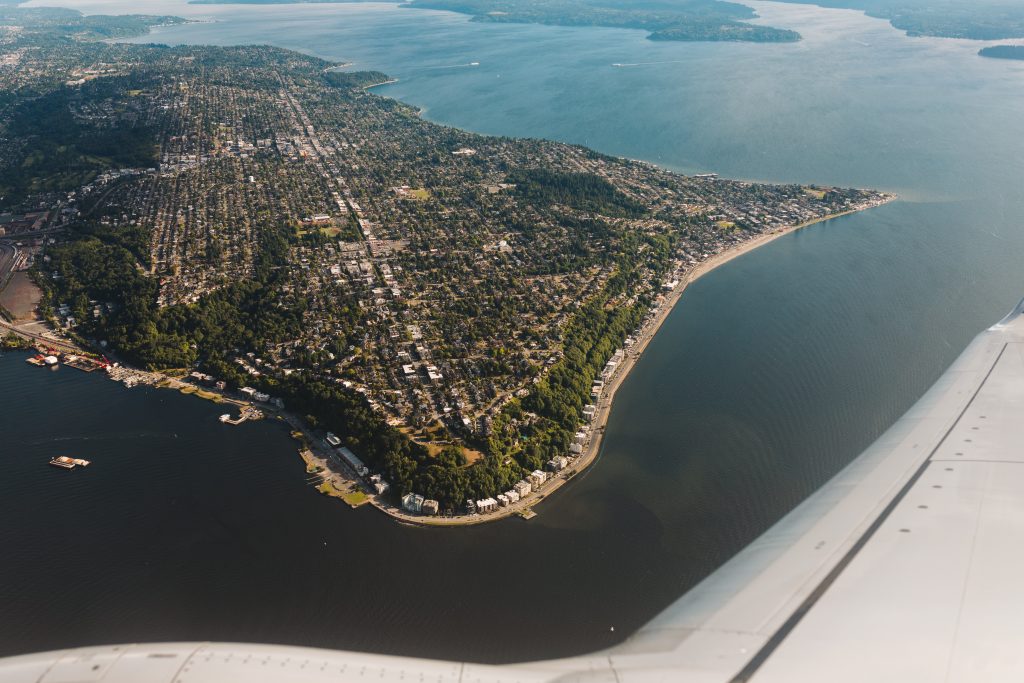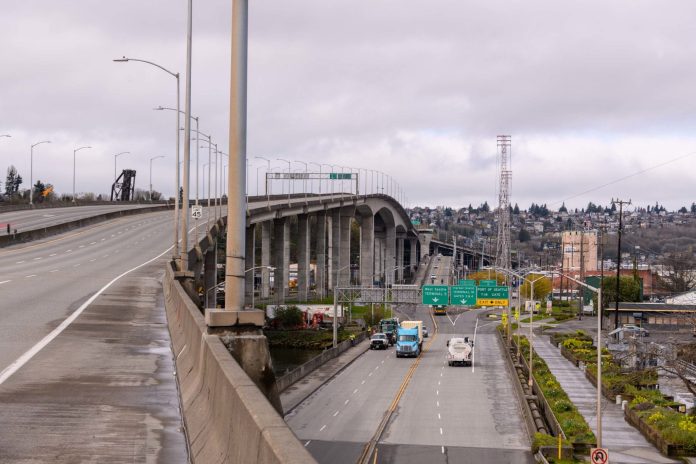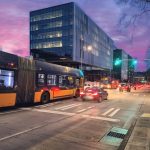Removing the West Seattle Bridge and not replacing the lost car capacity is the most responsible move for the climate and being prudent with resources. Transit should be our priority.
The Seattle Department of Transportation (SDOT) has said that the cracked bridge won’t be able to reopen until at least 2022. Expensive repairs would need to be done before traffic can be restored to the structure, and SDOT Director Sam Zimbabwe has warned that those repairs could only buy the bridge 10 more years of life. The repaired bridge might even not be able to handle trucks or buses nor support its prior traffic capacity.
We’re left in an awkward situation where a key transportation corridor has simply vanished. The drivers of some 100,642 vehicles who used to cross the bridge each day must fundamentally change how they get around for the long-term. This unprecedented change is far from ideal; vital connections will be slashed and the urban fabric of the peninsula will be greatly altered.
“Everything has to be on the table,” said Councilmember Lisa Herbold, referring to the myriad of new ideas for West Seattle transit. Mayor Jenny Durkan has suggested creating new bus routes that connect with light rail and Herbold is proposing a citywide ballot measure to better fund buses.
Before pandemic cuts, King County Metro Routes 21 and 120 (future H Line) and RapidRide C Line buses already saw three- to five-minute intervals at rush hour, but they’re great candidates for even more frequency. We’ll beef up the King County Water Taxi and its free shuttles routes (Routes 773 and 775), too, knowing that it doubled its ridership during the viaduct closure. Commuters living in the northerly areas of West Seattle might prefer taking the Water Taxi while those living farther south would be better served by buses.
We might even kick things up a notch by interlining some buses with others heading towards Bellevue and Everett to better serve reverse commuters who normally drive over the bridge.
To handle increased bus service, our roads need to stay clear; we’ll keep the Spokane Street “low bridge” restricted to buses, trucks, and emergency vehicles.
From an urbanist’s perspective, this beefed-up mode share for transit is great. The West Seattle Bridge closure could give tens of thousands commuters that extra “push” to ditch their cars or decide not to buy them. The benefits are huge: less traffic, less pollution, greater equity…you know the spiel.
But there’s a caveat: of the many sources I’ve checked, including SDOT itself, all support replacing the bridge with a similar structure.
Imagine: a transit-oriented West Seattle, record-breaking bus ridership, actually meeting our climate goals…for two years. After that, the clock rewinds and we’re back to the car-oriented present.
I digress.
But if we do choose to reopen the seven lanes of West Seattle Bridge, it will almost certainly cannibalize transit ridership. History has proven time and time again that adding new road capacity doesn’t reduce traffic or reduce commute times; replacing the West Seattle Bridge is simply a disaster waiting to happen.
So let’s preserve that new, transit-oriented West Seattle, along with its greater walkability, transit priority, and cleaner air, by demolishing the bridge and not replacing it.
Sure, removing the West Seattle Bridge is a peculiar instance of freeway removal, as we aren’t exactly replacing it with a new boulevard as is normally done. But we can think of our boulevard to be buses and light rail; they can handle the traffic boulevards usually do elsewhere. The Spokane Street bridges and other existing infrastructure fortunately allow for bus service to continue with minimal impact.
Not repairing or replacing immediately saves us money. Installing bracing on the existing bridge just to keep it from collapsing is looking to cost $33 million; the price to make the bridge traffic-worthy will certainly be many multiples of that. A replacement bridge would then cost our post-I-976 and coronavirus-ridden economy hundreds of millions, perhaps billions, more. Our money could be better invested into buses and light rail. Tearing down the bridge also opens up clean right-of-way for light rail to cross the Duwamish River.
Most importantly, a replacement bridge will likely be completely unnecessary. Studies suggest that temporary changes in travel patterns resulting from extraordinary events (bridge closure in our case) promote permanent shifts in travel patterns.

A great example of this is in Santa Cruz County, California where carpooling was mandated following the Loma Prieta Earthquake. The Tsuchida and Wilshusen study surveyed commuters and found that 57% of respondents continued carpooling even after the mandate was lifted. Similarly, when public transport was temporarily prioritized in Sydney and Athens during their Olympic Games, ridership increased and stayed high even after the events and transit priority ended.
The key takeaway, then, is that while the current West Seattle Bridge is closed for repairs, commuters will have to use buses, bike, and telework rather than commute by car. These changes of habit then become permanent, which in turn eliminates the need for a replacement bridge. Furthermore, while the above examples lasted for a few months at most, our situation will last for at least two years, giving people even more time to settle into their new commuting habits.
Thus, we shouldn’t think of not replacing the West Seattle Bridge as a freeway removal project–that part’s already happened with the bridge’s two-year closure. Instead, we should be thinking of repairing and replacing it to be a freeway construction project. And more freeways amidst a climate crisis hardly seems like a good idea.
Transportation was our state’s heaviest-polluting sector in 2017 at 43.5 million metric tons of emissions, with gasoline engines being the top source. A 2007 executive order from Governor Christine Gregoire requires Washington to reduce statewide emissions of greenhouse gases to 1990 levels by 2020, 25% below 1990 levels by 2035, and 50% below 1990 levels by 2050.
But we’re still failing miserably. We haven’t made the 2020 target and emissions have risen by 6% since 2012. Although emissions have grown less quickly than our population and economy, these factors do nothing to remediate the environment. We need a plan to drastically reduce emissions–something Governor Jay Inslee has said we don’t have.
But removing the West Seattle Bridge could help get us back on course.
So let’s not build another freeway. It will only turn the clock backwards. The West Seattle Bridge is our wake up call. It’s time to move on from the car-centric infrastructure of today and begin building the transit-rich city of tomorrow.
The featured image is courtesy of the City of Seattle.
Editor’s note: This article originally appeared under the pseudonym byline Hyra Zhang. Brandon Zuo is the same author.
Brandon Zuo is a high schooler and enjoys reading about urban planning and transportation. They enjoy exploring the city on the bus and on their bike. They believe that income and racial equality should be at the forefront of urban development. Brandon Zuo formerly wrote under the pseudonym Hyra Zhang.


